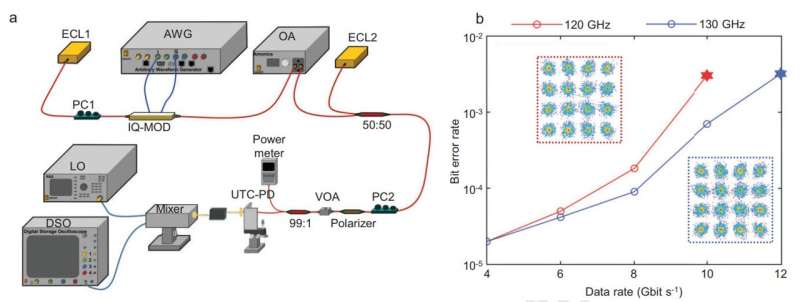The terahertz band is a gap band between microwave and infrared, and has shown great application potential in many cutting-edge information fields such as 6G communications. Terahertz silicon-based photonics has many advantages such as high transmission efficiency and is an effective platform for realizing terahertz devices.
However, how to implement devices with richer functions in the terahertz band or expand device control capabilities is still a hot research topic in terahertz integrated photonics.
In a study published in the journal National Science Review, researchers proposed a chip design method based on topological interlayer coupling regulation. This method uses the interlayer coupling strength of the bilayer valley photonic crystal to regulate the Hamiltonian of the bilayer topological photonic system:
H = HT + HB + HTB
Where HT and HB represent the Hamiltonian of the top and bottom photonic lattice respectively, while HTB is used to describe the Hamiltonian generated due to interlayer coupling.
By regulating the distance between layers, the system can be effectively controlled to be in a coupled state or a decoupled state, and the interlayer coupling Hamiltonian HTB can be adjusted to control the topological phase transitions of the photonic system. Due to the bulk-edge correspondence, the topological edge states before and after the phase transition can be distributed in different spatial paths.

In order to verify the potential application value of the technical solution in next-generation communications, the research team conducted relevant tests on the terahertz communication performance of the chip. The multiplexing chip achieves 10 Gbps and 12 Gbps 16-QAM signal transmission on two switchable channels of 120 GHz and 130 GHz respectively, with available bandwidths of 2.5 GHz and 3 GHz respectively.
This work enriches the methods of terahertz on-chip channel manipulation, further promotes the application of topological photonics in advanced communication systems and devices, and may inspire more novel physical mechanisms and phenomena in bilayer and multi-layer topological systems.
More information:
Hang Ren et al, Terahertz flexible multiplexing chip enabled by synthetic topological phase transitions, National Science Review (2024). DOI: 10.1093/nsr/nwae116
Provided by
Science China Press
Citation:
Terahertz flexible multiplexing chip enabled by synthetic topological phase transitions (2024, May 8)
retrieved 8 May 2024
from
This document is subject to copyright. Apart from any fair dealing for the purpose of private study or research, no
part may be reproduced without the written permission. The content is provided for information purposes only.
Reference :
Reference link


























+ There are no comments
Add yours